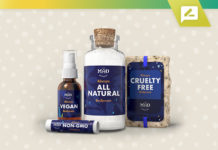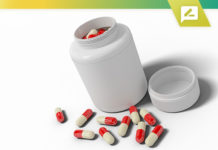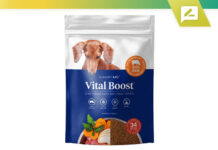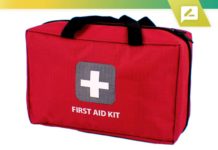In part one of our Health & Fitness Beyond 40 series, we explained the importance of knowing your body, and outlined the best practices and techniques for training each of the three different body types.
Understanding the best methods of training are important, but an understanding of the way the body builds muscle mass can be a powerful tool to help you achieve your fitness goals.
The body builds muscle mass in the same way for all body types, regardless of age. The only way to cause the body to generate new muscle is by damaging muscle tissue through training, which causes the body to repair itself with new muscle tissue.
This process occurs outside of the gym, during recovery time, and requires both energy and rest. Nutrition is incredibly important to the muscle growth process, as the body harvests raw material from dietary intake to create new mass.
The Basics Of Building Muscle
The journey towards a healthy, fit body is a process of learning and development. No matter how physically fit a person is, there are always new techniques to try and new information to incorporate into training programs.
As with many developmental processes that require time and effort, training with the aim of reaching fitness goals is often a trial-and-error process. There is, however, a core basis of information that can assist with reaching fitness and health goals faster.
A basic understanding of the biological processes that contribute to muscle growth and how they apply to the process of physical development can offer a significant advantage to fitness enthusiasts of all levels. Learning how your body builds muscle mass and understanding the best ways to foster muscle growth can help you speed up the journey to fitness.
In this article, we’ll delineate the five fundamentals of muscle building, explaining how the muscle growth process works and providing insight on how to get the best results from your fitness journey.
Contents
1. The Burn Explained
The first step in creating new muscle mass is exercise. The most effective form of exercise for building muscle mass is strength training, which causes damage to muscle tissue as you lift weight.
During physical exercise, the body releases a chemical that causes a sensation often referred to as “the burn”. When muscles are under stress and exerting force, such as lifting a dumbbell during a bicep curl, the tiny, contracting tissues inside the muscle will burn oxygen.
Once the point of failure is reached during this action, the muscle will run out of oxygen and release lactate, which is then used as an energy source. The burning feeling associated with intensive physical exercise is caused by lactate release. Lactate is acidic, which causes the burning sensation inside the muscle during peak stress.
This burning sensation recedes during breaks between sets, as the lactic acid released is carried away by the circulatory system, and is generally entirely gone one hour after an exercise session.
What Does the Burn Mean?
While the burn is uncomfortable, it’s not counterproductive to muscle development. On the contrary, experiencing muscle burn is generally indicative that your exercise regime is effective.
Research released by George Brooks, the Professor of Integrative Biology at UC Berkeley states that strength training causes the body to utilize lactic acid as an alternative to the carbohydrate or glucose energy that is stored in muscle tissue, and that this process becomes more efficient over time.
As the body becomes more efficient in using lactic acid as an energy source, the sensation of “the burn” becomes less intense, and the body is able to draw more energy from these stores. If you’re experiencing the burn during the early stages of your training program, don’t despair. Your body will become resistant to the uncomfortable sensation of lactic acid release over time.
A strong burning sensation is generally indicative of your muscles reaching their failure threshold, signaling that it’s time to rest. With time, your threshold for lactic acid release will increase, allowing you to push harder for longer, resulting in greater gains.
2. Muscle Growth & Hypertrophy
Muscle growth is a complicated process that requires a firm understanding of biology to grasp completely. The complex nature of muscle development has led to the dissemination of a large amount of pseudoscience in the fitness community, which often provides new fitness enthusiasts with an influx of contradictory and confusing information.
While the exact science of muscle growth may be complicated, there are a few basic facts that, once understood, can make achieving fitness goals easier. The core concept behind muscle development is that in order to develop a muscle, you must damage it. When you complete a weighted strength training exercise, you challenge the muscle and cause micro-trauma to the fibers that compose the muscle.
The body will repair these damaged fibers by causing the satellite cells that surround the fiber to induce new muscle cell growth, increasing muscle size and power. This process is called hypertrophy.
How Does Hypertrophy Work?
The satellite cells that surround muscle tissue are slightly different to the average muscle cell. Possessing only one nucleus, these cells multiply through replication, or cellular mitosis.
As these cells multiply to repair muscle micro-trauma, some remain in organelle form, retaining their function as muscle fiber. Most of the satellite cells, however, will undergo a maturation process into normal muscle cells through a process called differentiation.
The newly-formed muscle cells will fuse to muscle fiber to create myofibrils, or the long strands of muscle cells that compose regular muscular tissue.
As a result of this process, the myofibrils of the muscle cells will increase in number and become thicker, thereby creating a larger, more powerful muscle. This process is the basis of muscle development stimulation.
This process, complex and painful though it may sound, is actually microscopic and cannot be seen with the naked eye. Muscle cell multiplication is also extremely slow, occurring over weeks and months, so it’s important to repeatedly damage muscle tissue to promote growth.
Age can also become a contributing factor in the development of new muscle tissue, slowing down the rate at which the body is able to build muscles. It’s normal to experience sore muscles after a workout, as the micro-trauma caused by muscle growth stimulates a pain response, usually in the form of an ache.
After time the body will grow used to this growth process and the ache experienced after a workout may be less intense, but this doesn’t necessarily mean your workout wasn’t hard enough.
Moderate soreness and a sensation of muscle fatigue is generally a good indicator of an effective workout.
3. Delayed Onset Muscle Soreness
One of the primary demotivating factors that deter new fitness enthusiasts after their first gym session is delayed onset muscle soreness, or DOMS. The process of muscle damage and growth detailed in above causes a feeling of stiffness and soreness that, while not immediately apparent, can become very uncomfortable in the days following an intensive workout.
Delayed onset muscle soreness is named as such due to the lengthy delay between the actual damage that occurs to muscle fibers and the point at which the muscle tissue begins nerve signaling to the brain to create a pain response.
Muscle soreness and DOMS is generally attributed to the muscle directly, but there is a wide body of evidence that points to the muscle repair and growth process as the cause of this pain, not the micro-trauma to the muscle itself.
Reducing the Impact of DOMS
When the body begins to repair damaged muscle tissue and create new muscle cells, individual muscle cells swell inside their respective compartments, placing pressure on nerves, capillaries, blood vessels and arteries.
This pressure causes a painful aching sensation that permeates the entire muscle, from the surface down to the skeleton. There are a number of different techniques used to minimize the sensation of delayed onset muscle soreness, but none have been conclusively proven to offer complete relief.
Many fitness professionals recommend extensive stretching both before and after weight training sessions as a preventative measure, and gentle stretching of sore muscles as a relief technique. Remedial sports massage can help to increase circulation and reduce the amount of pressure on nerves, while cold showers can reduce inflammation.
Newer techniques for minimizing the effect of DOMS include wearing compression clothing that groups muscles together to minimize soft tissue damage, and foam rolling, which can smooth out knots in muscle and increase circulation.
Topical menthol balms such as Tiger Balm and Deep Heat are also a popular solution for DOMS. The menthol in these solutions has been shown to cause interactions between calcium ions and the neurons that sense temperature, inhibiting the pain response from inflamed tissue.
4. Rest & Recovery
Rest is the most important factor in any fitness program. The body is only able to repair itself and promote new muscle growth during rest periods. Over training or overworking your muscles has a definite negative impact on your overall health, as your body will be unable to repair muscles that are under continuous strain.
Injured muscle fiber generally takes up to five days to completely recover from mictrotrauma. Just like it’s impossible to repair a broken fender on a moving car, so too is it impossible to repair your body while working out.
The slow process of muscle growth means that it’s critical to provide your body with sufficient time to repair in order to achieve results.
The process of creating new muscle mass requires energy, so if you’re constantly running around and resting little, you won’t have any energy left for muscle development. When following a training program, sleep is essential to the recovery process.
Aim to gain at least eight hours of uninterrupted sleep every night on a regular schedule. Poor sleep hygiene can seriously hinder your muscle growth.
Why is Rest Important to Muscle Recovery?
The process of muscle cell regeneration is controlled by the release of a hormone called HGH, or human growth hormone. HGH plays a critical role in many aspects of the body, and is produced by both the pituitary gland and the thyroid.
This important hormone regulates the repair, growth and development process in the human body, and is what causes growth in children. HGH release is so critical to muscle development that synthetic forms of it are considered a steroid, and are a controlled substance in many countries.
Luckily, the human body naturally secretes its own HGH, which is synthesized and released then the body is subjected to regular physical exercise. When HGH is released into the body by either the thyroid or pituitary gland, it causes the liver to secrete a protein called Insulin-like Growth Factor 1, or IGF-I.
This protein stimulates the distribution and proliferation of cartilage cells known as chondrocytes, which cause bone growth, strengthening the skeletal system. IGF-I released by the liver as a result of HGH levels increasing also plays an important role in muscle growth.
This protein has been observed to cause the differentiation of myoblasts, which precursors of functioning muscle tissue, into myocytes, the basic form of muscle tissue.
HGH-released IGF-I also promotes more efficient amino acid uptake, allowing the body to process these critical elements more effectively. Finally, IGF-I causes the body to synthesize protein at a higher rate, speeding up the overall muscle development process.
In summary, your muscles won’t develop unless you give them sufficient rest. While it’s not necessary to give each muscle a full week of rest between workouts, try to create a split program that gives each muscle group a least a few days recovery time before working them out again.
If you’re still experiencing extreme DOMS from a previous workout on the day you plan to work a muscle group, either limit the intensity of your workout that day or swap the routine with one that targets a different muscle group.
5. Nutrition & Muscle Growth
The body is unable to create new muscle mass without energy, and the only way the human body is able to gain the energy it needs is through proper nutrition and good dietary practices. It takes up to 6000 calories to create just one pound of lean muscle mass, which is enough to power the average person for three days. Beyond the age of 40, the metabolism begins to slow down, contributing to the development of fat tissue.
Hormonal changes in the body begin to cause fat to collect around the adipose region, or stomach, sides and upper thighs.
Attempting to develop lean muscle mass without creating fat deposits at the same time is a difficult prospect at any age, but the changes that occur in the body after 40 can make it more complex.
The body is not picky about the kind of food it uses to create fat deposits, but can generally only convert clean protein into muscle mass. To prevent your body from gaining a large amount of fat while consuming food at a caloric excess, it’s important to ensure you’re eating only healthy, nutritionally balanced meals.
The recommended protein intake for fast muscle growth is 1.5 grams of protein per pound of body weight. With the average human body weighing in at 176 pounds, the recommended daily intake of protein when following an exercise program designed to increase muscle mass should be around 265 grams of clean protein every day.
While this may not sound like a lot of protein, it’s quite a lot more than the average person’s protein intake. For example, the average chicken breast contains just 30 grams of protein.
To consume enough protein to meet a 1.5 gram per pound of body weight ratio consuming only chicken breast, you’d need to eat eight chicken breasts every day.
How to Increase Your Protein Intake
A large egg typically contains only six grams of protein, while a glass of milk contains roughly eight. Bear in mind that your protein intake only includes foods that actually have protein in them- if you eat a steak dinner complete with potato, sides and salad, the only protein in that meal comes from the steak- about 62 grams on average.
It can become very difficult to increase your protein intake without overeating or becoming bloated. The easiest way to increase your protein intake is with protein supplements. There are many protein supplements available on the market today that offer a cost-effective way to dramatically increase your protein intake without needing to eat excessive amounts of food.
Most protein supplements source their protein content from whey, a byproduct of milk, but there have been recent developments in vegan-friendly protein powder sourced from peas and other legumes. A typical protein shake contains 40-45 grams of protein, while a protein bar generally contains up to 30 grams of protein.
If deciding to supplement protein intake with protein bars, however, be sure to check out the ingredients, as many protein supplement meal bars contain excessively high amounts of sugar and salt.
By carefully balancing your diet, it’s possible to create a meal plan that delivers most of the protein you need to build lean muscle mass with minimal need for supplements. Fish, chicken, red meat, and legumes are all excellent sources of dietary protein.
Remember to maintain a nutritionally balanced macronutrient intake- your diet should consist of 20% protein, 30% fats and 50% carbs, although it’s possible to alter these levels if you’re trying out a low-carb diet.
The Importance of Meal Frequency
As your body repairs damaged muscle with protein taken from your diet, it’s important to provide your metabolism with a steady stream of nutrients. You may be used to eating three square meals a day, but when aiming to create new lean muscle mass, it’s best to break those meals down into six smaller meals.
Research published by the American Journal of Clinical Nutrition demonstrated that meal frequency has a direct link to the rate at which the body is able to burn fat, the sensitivity of the body to insulin, and cholesterol levels.
It’s been demonstrated that individuals that follow a meal plan consisting of smaller portions regularly throughout the day spread out over two hour intervals have a higher rate of thermogenesis than individuals who eat larger meals thrice daily.
Thermogenesis is the rate at which the body converts stored fat energy into heat energy. A higher thermogenic rate means the body will be able to burn away unwanted fat deposits faster. TEF, or thermogenic effect of food, is what triggers the sensation of “fullness” and helps to prevent food cravings.
Eating smaller, more regular portions helps to promote higher rates of fat loss and keeps food cravings in check. By controlling food portions, it’s possible to prevent the buildup of large amounts of fat, and help the body utilize the protein available in your diet in the most efficient manner. Calorie counting, while important to individuals seeking to lose weight, is not so important when attempting to gain muscle mass.
By simply eating clean protein, greens, and natural fiber, you’ll be supplying your body with everything it needs to create a more muscular, fitter body.
Men & Women After 40 Muscle Boosting Fitness Workout Exercises Quick Summary
Overall, there are five key points to take away from this article:
- Muscle burn is induced by the release of lactic acid and will become less intense over time.
- Muscle growth is caused by hypertrophy, which is the process of continuous damage and repair to muscle tissue.
- Delayed onset muscle soreness will occur after an intensive workout and is caused by the healing process, but can be minimized through stretching, preventative techniques, foam rolling and topical treatments.
- Rest is critical to the recovery process, promoting muscle repair and growth. Without sufficient time to rest, your body is unable to develop new muscle tissue. Allow several days between working muscle groups.
- Nutrition is pivotal in muscle gain. Ensure you’re getting enough protein to build new muscle and break down meals throughout the day to minimize fat gain.
By understanding these five critical points and incorporating them into your lifestyle habits, you’ll be able to dramatically increase your gains and reach your health and fitness goals faster.
Coming up in the third part of our Health & Fitness Beyond 40 series, we’ll provide some detailed advice on the right supplements to take to get the best out of your workouts.















